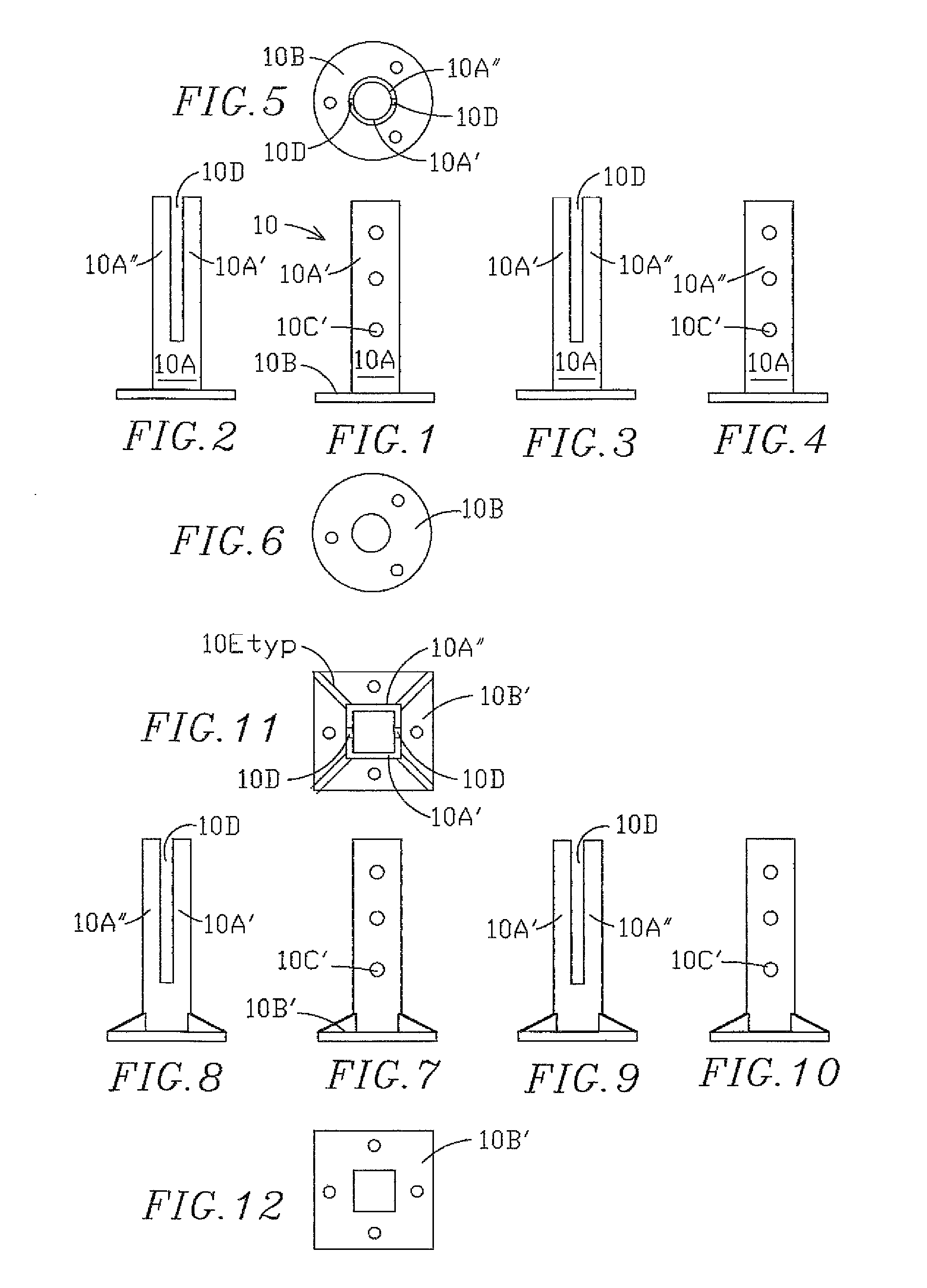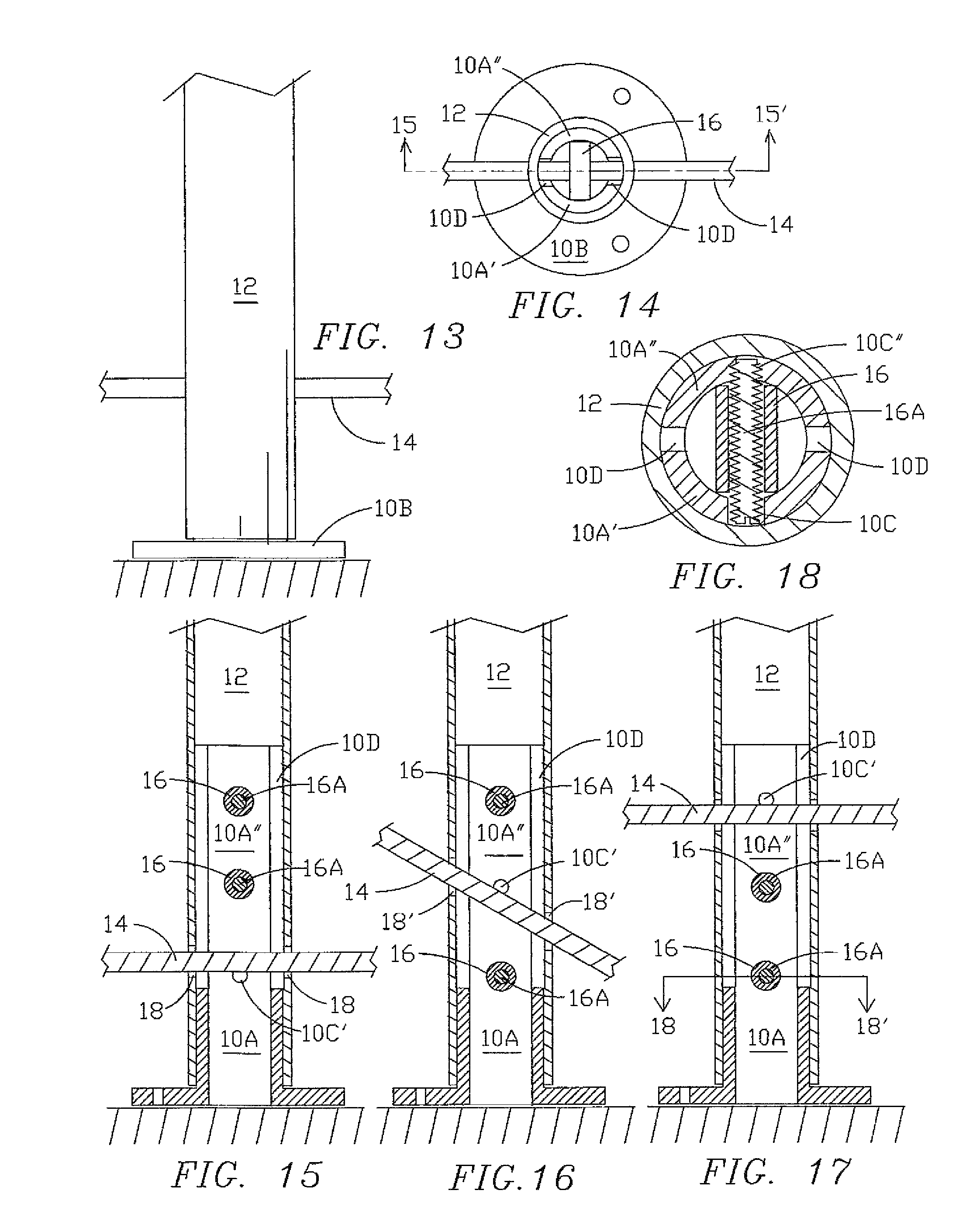Universal bifurcated stanchion for handrail systems
a technology of handrails and stanchion posts, applied in the field of handrails, can solve the problems of difficult installation, difficult installation, time-consuming and costly, etc., and achieve the effects of saving labor, facilitating installation, and yielding material, weight, labor and overall cost savings
- Summary
- Abstract
- Description
- Claims
- Application Information
AI Technical Summary
Benefits of technology
Problems solved by technology
Method used
Image
Examples
Embodiment Construction
[0030]FIG. 1 is a front elevational view of a stanchion 10 of the present invention showing the basic structure of an upright portion 10A integrally attached to a bottom mounting flange portion 10B. A preferred embodiment is configured with a vertical array of three unthreaded holes 10C in the front arcuate sidewall 10A′, visible in this view. At the rear of stanchion 10, not visible in this FIG. 1 view, a second arcuate sidewall of identical outline shape is located in mirror-image relation. (see FIG. 4).
[0031]FIG. 2 is a side view of the stanchion 10 of FIG. 1 showing the upright portion 10A with its major upper portion bifurcated into two arcuate sidewalls 10A′ and 10A″, separated by a pair of vertical slots 10D extending from closed lower ends located at a designated height above the flange portion (10B, FIG. 1) to their open upper ends located at the top edge of upright portion 10A.
[0032]FIG. 3 is the opposite side view of the stanchion of FIGS. 1 and 2, showing the bifurcated ...
PUM
 Login to View More
Login to View More Abstract
Description
Claims
Application Information
 Login to View More
Login to View More - R&D
- Intellectual Property
- Life Sciences
- Materials
- Tech Scout
- Unparalleled Data Quality
- Higher Quality Content
- 60% Fewer Hallucinations
Browse by: Latest US Patents, China's latest patents, Technical Efficacy Thesaurus, Application Domain, Technology Topic, Popular Technical Reports.
© 2025 PatSnap. All rights reserved.Legal|Privacy policy|Modern Slavery Act Transparency Statement|Sitemap|About US| Contact US: help@patsnap.com



